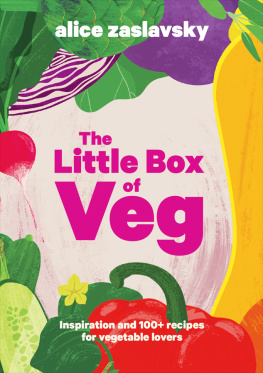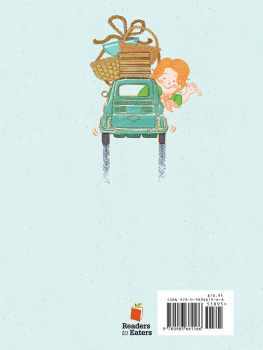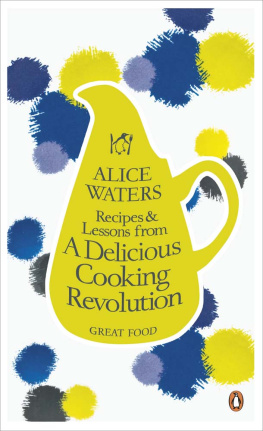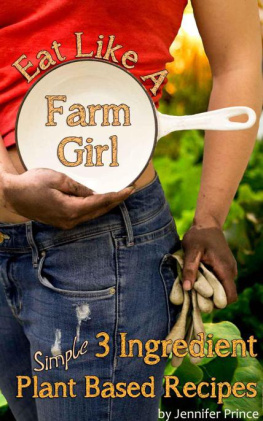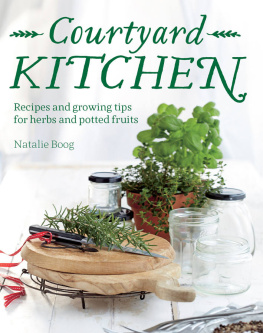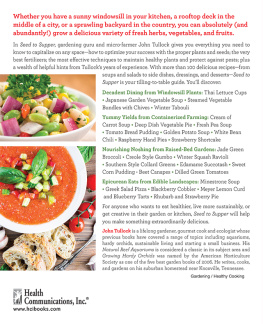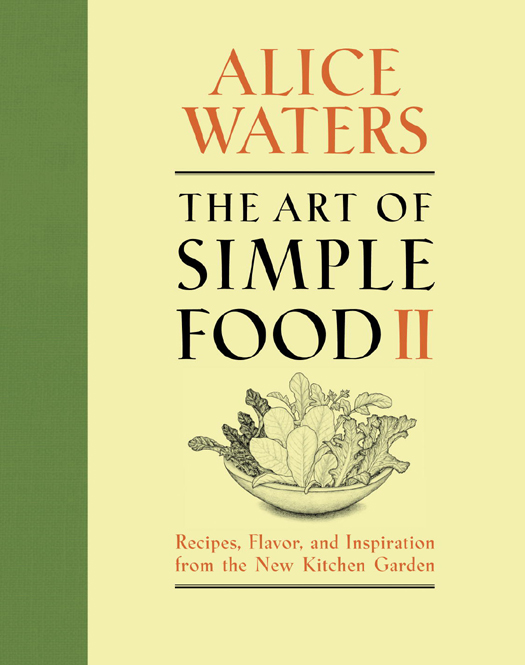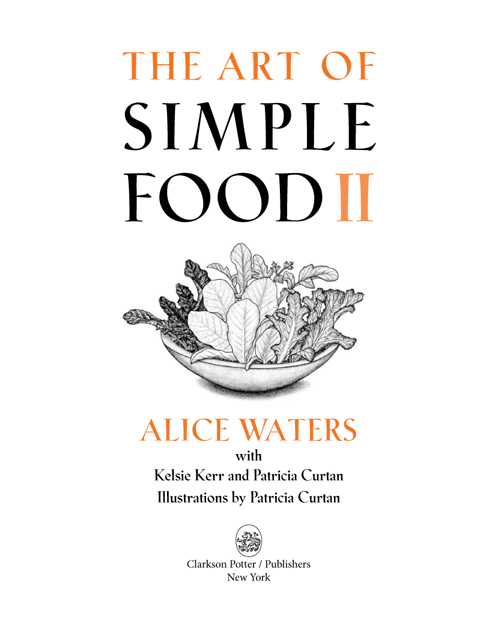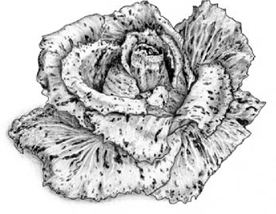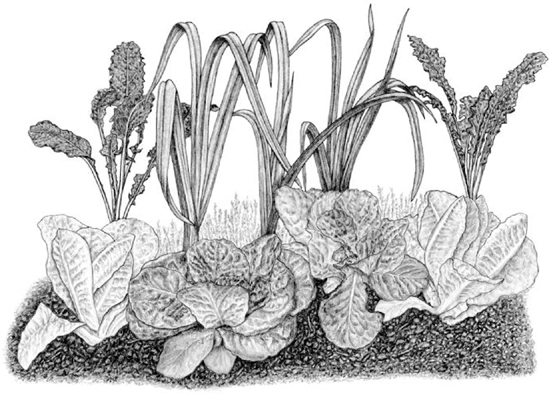Copyright 2013 by Alice Waters
Illustrations 2013 by Patricia Curtan
All rights reserved.
Published in the United States by Clarkson Potter/Publishers, an imprint of the Crown Publishing Group, a division of Random House, Inc., New York.
www.crownpublishing.com
www.clarksonpotter.com
CLARKSON POTTER is a trademark and POTTER with colophon is a registered trademark of Random House, Inc.
Library of Congress Cataloging-in-Publication Data is available upon request.
ISBN 978-0-307-71827-3
eISBN 978-0-7704-3347-5
Design by Patricia Curtan
v3.1
Also from Alice Waters and Chez Panisse
40 Years of Chez Panisse
The Art of Simple Food
In the Green Kitchen
Chez Panisse Fruit
Chez Panisse Caf Cookbook
Chez Panisse Vegetables
Fanny at Chez Panisse
Chez Panisse Cooking
Chez Panisse Desserts
Chez Panisse Pasta, Pizza, and Calzone
Chez Panisse Menu Cookbook
Part I
Flavor as Inspiration
Varieties in the GardenRecipes for the Kitchen
My Kitchen Garden
Growing What I Love to Eat
I STARTED MY KITCHEN GARDEN because I was longing for mesclun, that very particular French salad made of distinctive sweet and bitter greens and herbs. I had been daunted by the thought of growing food, but then, driven by the desire for that flavor from Nice, I turned my backyard into a salad garden for the restaurant. My success surprised and delighted me. I was so excited to have my yard filled with the lettuces I loved.
You do not need a large backyard to start a garden. There are many other underused locations waiting just for you: balconies and windowsills, rooftops, vacant lotsand schoolyards! Tragically, supermarkets have numbed us with the convenience of the same mass-produced fruits and vegetables year-roundto the point that most of us consider a garden unnecessary. Growing a few lettuces or tomatoes is pleasurable, but it is so much more than thatfor the future of the planet, it is a necessity that we become caretakers of the land. Fortunately, this is easy to doand affordable, too.
We have been thoroughly indoctrinated from childhood to think that we cant grow our own foodor cook, for that matterbecause it is too much work and takes too much time, that the climate is not right, or that there isnt enough room. But that is not so. When I was very young, my family had a victory garden in our New Jersey backyard, and we were not alone. With Eleanor Roosevelt leading the charge with her garden on the White House lawn, more than twenty million victory gardens were planted during World War II, and they produced more than nine million tons of fresh vegetables. I find it incredibly inspiring that the White House has a kitchen garden again, after too many yearsespecially now, when so many of us want to grow beautiful edible plants instead of lawns.
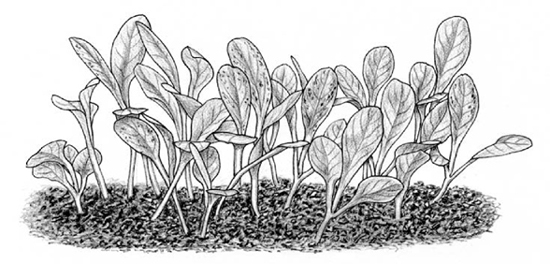
The lettuce garden in my backyard moved to a farm long ago, but my kitchen garden continues to grow. The grassy area of my tiny yard gets smaller and smaller every year. But I couldnt live without my beds of lettuces! Herbs are planted throughout; I depend on them daily. I let rocket reseed itself all over the garden to eat young in salads, with its flowers sprinkled over, or wilted in pasta sauce when it matures. In summer, I grow cherry tomatoes and beans. In fall and winter, I have plots of chicories, kales, and chard. There is plenty of fruit, tooa dwarf apple and a large Gravenstein, a small Meyer lemon, a kumquat, a Fuyu persimmon, and a small thicket of raspberry canes. I tuck edible plants in among the roses, and they are as beautiful as their neighboring flowers. I have a couple of chairs and a small table, and a little grill is set up nearby so I can cook and eat right in the garden. I love to watch the ebb and flow of growth: tiny sprouts as they push up from the soil, blue borage flowers reaching out to bees and birds, the burgeoning harvest as it ripens. I feel connected to the whole cycle of life.
My own path to gardening has been through taste. I am forever falling in love with the fantastic range of varieties available for almost every food plant. Learning to discern these subtleties of texture and flavorlearning to distinguish an Elberta peach from a Sun Crestis a thrill for me. Using hand-selected produce that is still full of life and vitality, just picked from the vine or pulled from the ground, is what makes cooking not just good, but irresistible.
Gardening has also taught me empathy for farmers and farm workers and respect for the hard work they do growing our food and taking care of the land. It makes us all remember that food is precious, and we are dependent on the land for our survival. It is all about the land. Thats the reason I wanted to write this book. One of my most powerful gardening experiences has been watching the children at The Edible Schoolyard, a kitchen garden planted at Martin Luther King Jr. Middle School, a public school in Berkeley, California. Every time I see them measuring the vegetable beds for their math class, or harvesting ancient grains out in the garden for a history class, or stealing a taste of a ripe mulberry, I am reminded that there is nothing more transformational than the experience of being in nature. We have been separated from it, but as soon as we dig our hands into the soil and start watching things grow, we fall in love effortlesslywe realize we are a part of nature. I have seen this transformation happen in a school full of teenagers; I have seen it happen at the Homeless Garden Project in Santa Cruz; I have seen it happen with inmates in a jail. This connection to and respect for nature can be awakened in all of us.
The chapters of this book are filled with the experience of extraordinary farmers and cooks that I have met over the past forty years. It is with their collective knowledge that we have tried to demystify gardening, by providing recipes for cultivation and offering the most enticing dishes we make from our harvest. Each recipe celebrates the flavor of the delicious varieties of fruits and vegetables we have discovered in the fields of our farmer-gastronomes, heritage varietals that have been lost in the industrial farms in this country. Carlo Petrini, the founder of Slow Food International, has said that cooks need to be gardeners and gardeners need to be gastronomes in order to ensure the sustainability of our food system. Thomas Jefferson, our countrys most celebrated farmer-gastronome, is an inspiring example. The garden was the passion of his life. He had an adventurous palate and a profound respect for agrarian values. He planned his garden for the pleasures of the table and combed the world for interesting and tasty plants to grow. I love knowing that he sowed a thimbleful of lettuce seeds every week to ensure there was fresh salad on the table every night. Today Monticello is more than a landmark; it is a national treasury of heirloom seeds, a place of enduring values, where the roots of our democracy still thrive.



